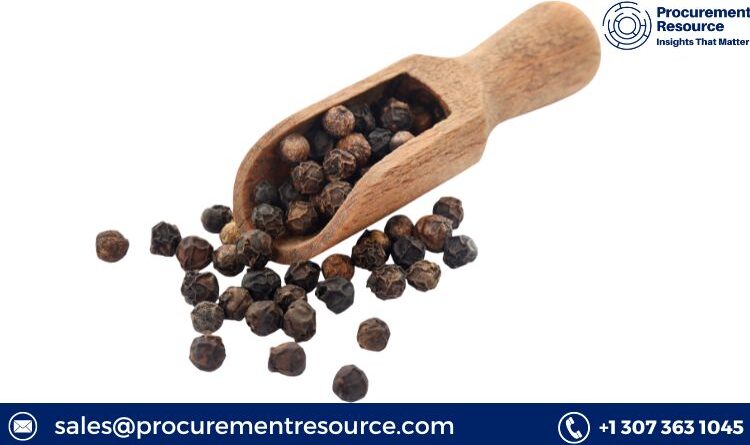Production Cost of Black Pepper Oleoresin
Black pepper, often referred to as the “king of spices,” is one of the most widely used spices globally, prized for its pungent flavor and aroma. In recent years, the demand for black pepper oleoresin, a concentrated extract of black pepper, has been steadily rising, driven by its versatility in food, beverage, pharmaceutical, and cosmetic industries. However, the production cost of black pepper oleoresin involves a series of complex processes and factors that contribute to its overall cost. In this article, we delve into the intricacies of black pepper oleoresin production, examining the key cost drivers, processes involved, and economic considerations.
Table of Contents
ToggleUnderstanding Black Pepper Oleoresin
Black pepper oleoresin is a concentrated extract obtained from black pepper (Piper nigrum) through solvent extraction or steam distillation methods. It contains the essential oils, piperine, and other bioactive compounds that contribute to the characteristic flavor, aroma, and health benefits associated with black pepper.
The production process typically begins with the selection of high-quality black pepper berries, which are harvested at the peak of ripeness to ensure optimal flavor and aroma. The berries are then cleaned, dried, and ground into a coarse powder before undergoing extraction.
Request For Free Sample: https://www.procurementresource.com/production-cost-report-store/black-pepper-oleoresin/request-sample
Solvent Extraction Process
In the solvent extraction method, the ground black pepper powder is mixed with a food-grade solvent such as ethanol or hexane to dissolve the essential oils and other compounds. The mixture is then filtered to separate the soluble components from the insoluble residue. The solvent is subsequently evaporated under vacuum to yield a concentrated oleoresin extract, which is further processed to remove any remaining traces of solvent and impurities.
Steam Distillation Process
Alternatively, steam distillation involves passing steam through the ground black pepper powder to extract the volatile compounds. The steam vapor containing the essential oils and other constituents is then condensed and collected, with the resulting mixture undergoing further processing to separate the oleoresin extract from the aqueous phase.
Cost Drivers in Black Pepper Oleoresin Production
Several factors influence the production cost of black pepper oleoresin, including:
- Raw Material Cost: The quality and availability of black pepper berries directly impact production costs. Fluctuations in black pepper prices due to factors such as weather conditions, harvest yields, and market demand can significantly affect raw material costs.
- Extraction Method: The choice of extraction method – solvent extraction or steam distillation – can influence production costs. While solvent extraction may require additional equipment and energy for solvent recovery, steam distillation involves higher water and energy consumption.
- Equipment and Infrastructure: The investment in extraction equipment, processing facilities, and infrastructure also contributes to production costs. The efficiency, capacity, and maintenance requirements of these assets impact overall operational expenses.
- Labor and Energy Costs: Labor-intensive processes such as harvesting, cleaning, grinding, and extraction require skilled manpower, adding to production costs. Energy consumption for heating, drying, and extraction processes also contributes to operational expenses.
- Regulatory Compliance: Compliance with food safety, quality standards, and regulatory requirements adds another layer of cost, involving testing, certification, documentation, and adherence to Good Manufacturing Practices (GMP) and Hazard Analysis Critical Control Points (HACCP) guidelines.
Economic Considerations and Market Dynamics
The economic viability of black pepper oleoresin production is influenced by various market dynamics, including:
- Demand-Supply Dynamics: The growing demand for black pepper oleoresin in food processing, flavoring, and pharmaceutical industries drives market growth. Fluctuations in demand-supply dynamics, seasonal variations, and market trends can impact product pricing and profitability.
- Price Volatility: Black pepper prices are subject to volatility due to factors such as crop cycles, weather uncertainties, geopolitical tensions, and currency fluctuations. Producers may employ hedging strategies or enter into forward contracts to mitigate price risks.
- Technological Innovation: Advances in extraction technologies, process optimization, and product development can enhance production efficiency, reduce costs, and improve product quality. Investments in research and development (R&D) are essential for staying competitive in the market.
- Sustainability and Traceability: Increasing consumer awareness and preferences for sustainably sourced and traceable products present opportunities and challenges for producers. Implementing sustainable agricultural practices, traceability systems, and ethical sourcing initiatives can enhance brand reputation and market competitiveness.
Conclusion
The production cost of black pepper oleoresin is influenced by a combination of factors, including raw material prices, extraction methods, equipment, labor, energy, regulatory compliance, and market dynamics. Understanding these cost drivers and economic considerations is essential for producers, processors, traders, and other stakeholders involved in the black pepper oleoresin supply chain.
Despite the challenges posed by market uncertainties and production costs, the growing demand for black pepper oleoresin presents opportunities for innovation, value addition, and market expansion. By adopting sustainable practices, leveraging technology, and responding to evolving consumer preferences, the black pepper oleoresin industry can thrive in a dynamic and competitive global market landscape.

